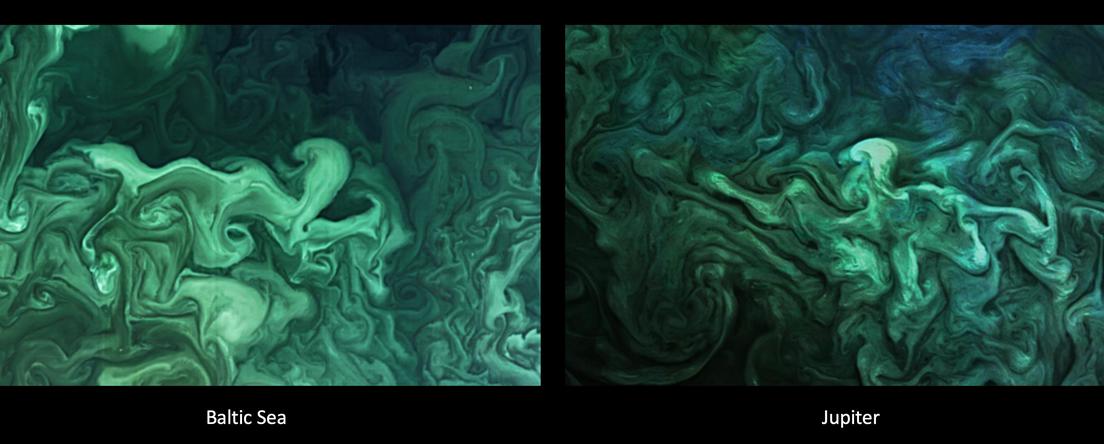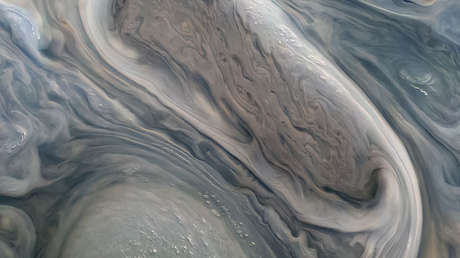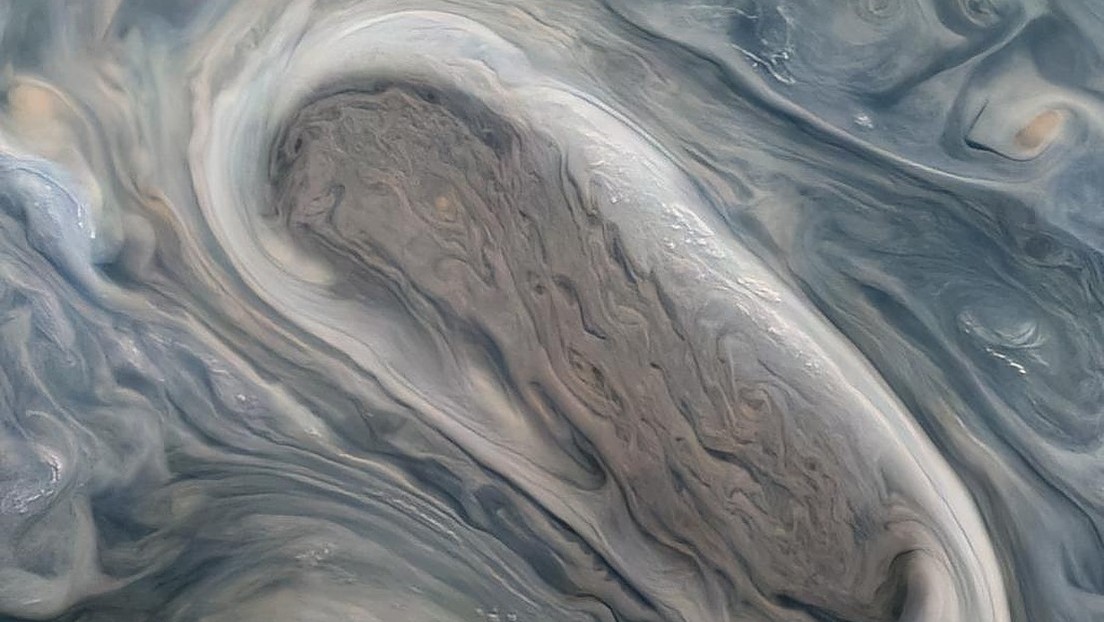Posted:
11 ene 2022 00:40 GMT
Images of polar cyclones captured on a distant planet by NASA’s Juno probe have allowed researchers to study the forces driving them.
American scientists were able to determine that the giant hurricanes that occur around the poles of Jupiter are caused by the same forces that move the waters in the Earth’s oceans.
Polar cyclones on the largest planet in our solar system were first detected in 2016 by NASA’s Juno probe. Since then, specialists have speculated that these storms are driven by convection, a process known on Earth in which warm air expands and rises to higher altitudes, cooler and denser. However, this theory has not yet been proven.
“When I saw the richness of the turbulence surrounding Hurricanes Jovian, with all its filaments and smaller eddies, it reminded me of the turbulence you see in the ocean around the eddies,” announce Oceanographer Leah Segelman, a researcher at the Scripps Institution of Oceanography at the University of California, San Diego (USA) and author of the new study. “It is particularly evident in high-resolution satellite images of plankton blooms, for example,” he added.

The researchers analyzed a series of infrared images that captured Jupiter’s north polar region, and in particular, its polar vortex array. On this basis, they were able to calculate the speed and direction of the wind, following the movement of the clouds. The team then interpreted the infrared images in terms of the thickness of the clouds. Warm regions correspond to soft clouds, as more depth can be seen in Jupiter’s atmosphere. Cold regions represent a thick layer of clouds that covers and obscures Jupiter’s atmosphere.

This allowed the team to show that rising hot air carries energy within the atmosphere and feeds clouds as they grow, turning into large-scale hurricanes like those seen around the poles. “Being able to study a planet so far away and find the physics that applies there is fantastic,” Siegelman said.
Similarly, scientists highlight that just as Earth’s oceanography helps unravel the mysteries of Jupiter’s atmosphere, recent findings on the planet could, in turn, shed new light on these large-scale processes on Earth.
the study It was published Monday in the journal Nature Physics.

“Problem solver. Proud twitter specialist. Travel aficionado. Introvert. Coffee trailblazer. Professional zombie ninja. Extreme gamer.”




More Stories
With a surprise in the case: a strange cell phone from Nokia was introduced
PlayStation Stars: what it is, how it works and what it offers to its users | Sony | video games | tdex | revtli | the answers
t3n – Digital Pioneers | digital business magazine